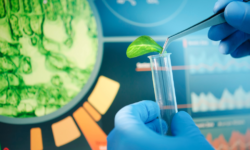Agri-Food Sector Report
The agri-food economic sector
The agri-food sector encompasses all the economic activities involved in the production, processing, distribution, marketing, and consumption of food and agricultural products. It is a vital sector that plays a critical role in ensuring food security, promoting economic development, and improving the quality of life for people all around the world.
The agri-food sector is one of the largest and most important sectors of the global economy, employing millions of people and generating billions of dollars in revenue. It includes a wide range of sub-sectors, including agriculture, fisheries, livestock, forestry, food processing, and food retail.
The agri-food sector faces many challenges, including climate change, declining soil health, water scarcity, and changing consumer preferences. However, with the increasing demand for food due to population growth, rising incomes, and changing dietary habits, the sector offers numerous opportunities for growth and innovation.
Governments, private sector companies, and civil society organizations all play a crucial role in supporting the development of the agri-food sector. Policies and investments that support sustainable agriculture, improve infrastructure, promote innovation, and enhance access to markets can help ensure the sector's long-term success and contribution to the global economy.
Growth of agri-food demand
The demand for agri-food products is expected to continue growing in the coming years, driven by several factors:
- Population growth: The world's population is projected to reach 9.7 billion by 2050, increasing the demand for food.
- Rising incomes: As incomes rise, people tend to consume more animal products, fruits, and vegetables, which require more resources to produce than grains.
- Changing diets: As people become more health-conscious and aware of the environmental impact of their food choices, they are shifting towards plant-based diets and organic, sustainably produced foods.
- Urbanization: The growth of urban populations is driving the demand for processed and convenience foods.
- Globalization: The increasing interconnectedness of the world's economies is creating new opportunities for trade and investment in the agri-food sector.
To meet this growing demand, the agri-food sector will need to adopt more sustainable and efficient practices, increase productivity, and innovate to develop new products and technologies. This will require significant investments in research and development, infrastructure, and education and training for farmers and other workers in the sector.
The return on investment in the agri-food sector
The return on investment (ROI) in the agri-food sector can vary depending on several factors, including the type of investment, the sub-sector, and the region. However, overall, the agri-food sector has historically offered a stable and reliable return on investment.
Investing in the agri-food sector can offer several advantages, such as:
- Diversification: Agriculture and food are essential human needs, and investing in the sector can provide a hedge against volatility in other industries.
- Long-term growth: The growing global population, rising incomes, and changing diets are driving long-term growth in the agri-food sector.
- Resilience: The agri-food sector has historically demonstrated resilience in the face of economic downturns and crises.
- Sustainability: Investing in sustainable agriculture and food systems can offer long-term returns by protecting natural resources and ensuring food security.
- Innovation: The agri-food sector is constantly innovating to meet changing consumer demands and improve efficiency, creating new investment opportunities.
However, like any investment, there are also risks associated with investing in the agri-food sector. These can include weather-related risks, pests and diseases, commodity price volatility, and regulatory changes.
Overall, investing in the agri-food sector can offer attractive long-term returns, but investors should carefully consider the risks and opportunities specific to each investment.
CAGR growth of the global agri-food sector market
According to a report by Mordor Intelligence, the global agri-food sector market was valued at USD 6.1 trillion in 2020 and is projected to grow at a compound annual growth rate (CAGR) of 3.5% during the forecast period of 2021-2026.
The growth of the agri-food sector market is driven by several factors, including increasing demand for food due to population growth and rising incomes, advancements in agricultural technology, and the need for sustainable and efficient food production systems.
Within the agri-food sector market, different sub-sectors are projected to grow at different rates. For example, the food processing sub-sector is expected to grow at a CAGR of 4.5% during the forecast period, while the agriculture sub-sector is projected to grow at a CAGR of 2.8%. The livestock sub-sector is expected to grow at a CAGR of 3.9%, driven by increasing demand for meat and dairy products.
The Asia-Pacific region is projected to have the highest CAGR during the forecast period, driven by the growing population and rising incomes in the region. North America and Europe are also expected to experience steady growth, while Latin America and Africa are projected to have lower growth rates due to various challenges in the agricultural sector.
It is important to note that these projections are subject to various factors and uncertainties, such as climate change, government policies, and trade relations, which could affect the actual growth of the agri-food sector market.





